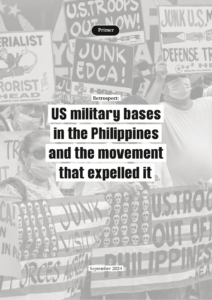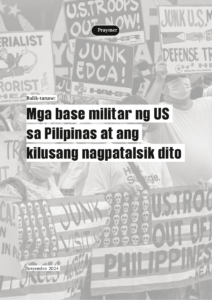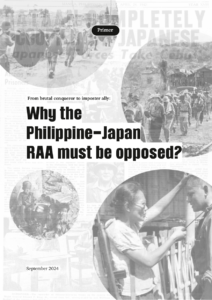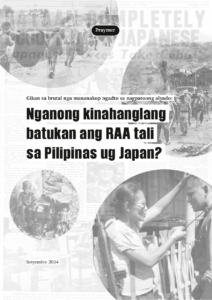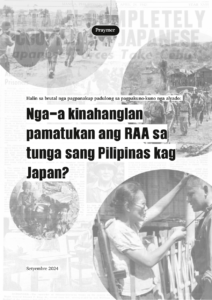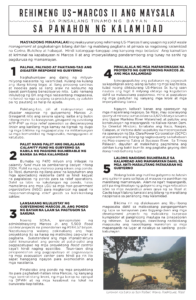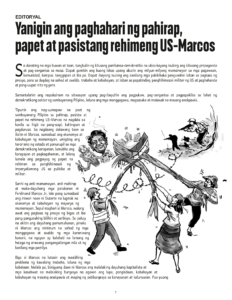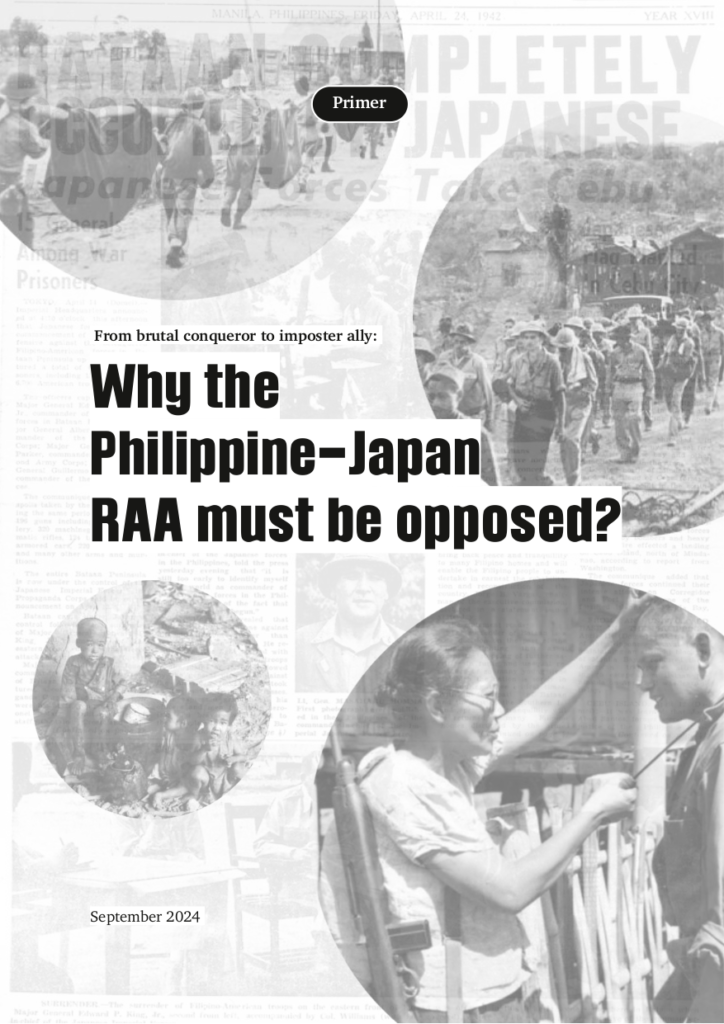
From brutal conqueror to imposter ally: (Primer) Why the Philippine-Japan RAA must be opposed?
Download: PDF PDF (Black & White)
The Reciprocal Access Agreement (RAA) between the Philippines and Japan was signed on July 8, 2024. It is now up for ratification by the Senate to make it a full treaty. A number of senators, including Senate president Francis Escudero and phony “opposition” Risa Hontiveros, are rushing to sign it. They sing in chorus with the US in peddling the agreement as an instrument for “security and stability” in Asia. They blatantly ignore the history of Japan’s brutal occupation of the Philippines.
Through the RAA, the Marcos regime will allow Japan to heighten its intervention in the Philippines in exchange for the provision of military equipment, as well as promises of investment and loans for neoliberal programs and policies. It also further binds the country to the imperialist belligerent alliance led by the US. It will further undermine the country’s ability to independently assert its own interests and aspirations.
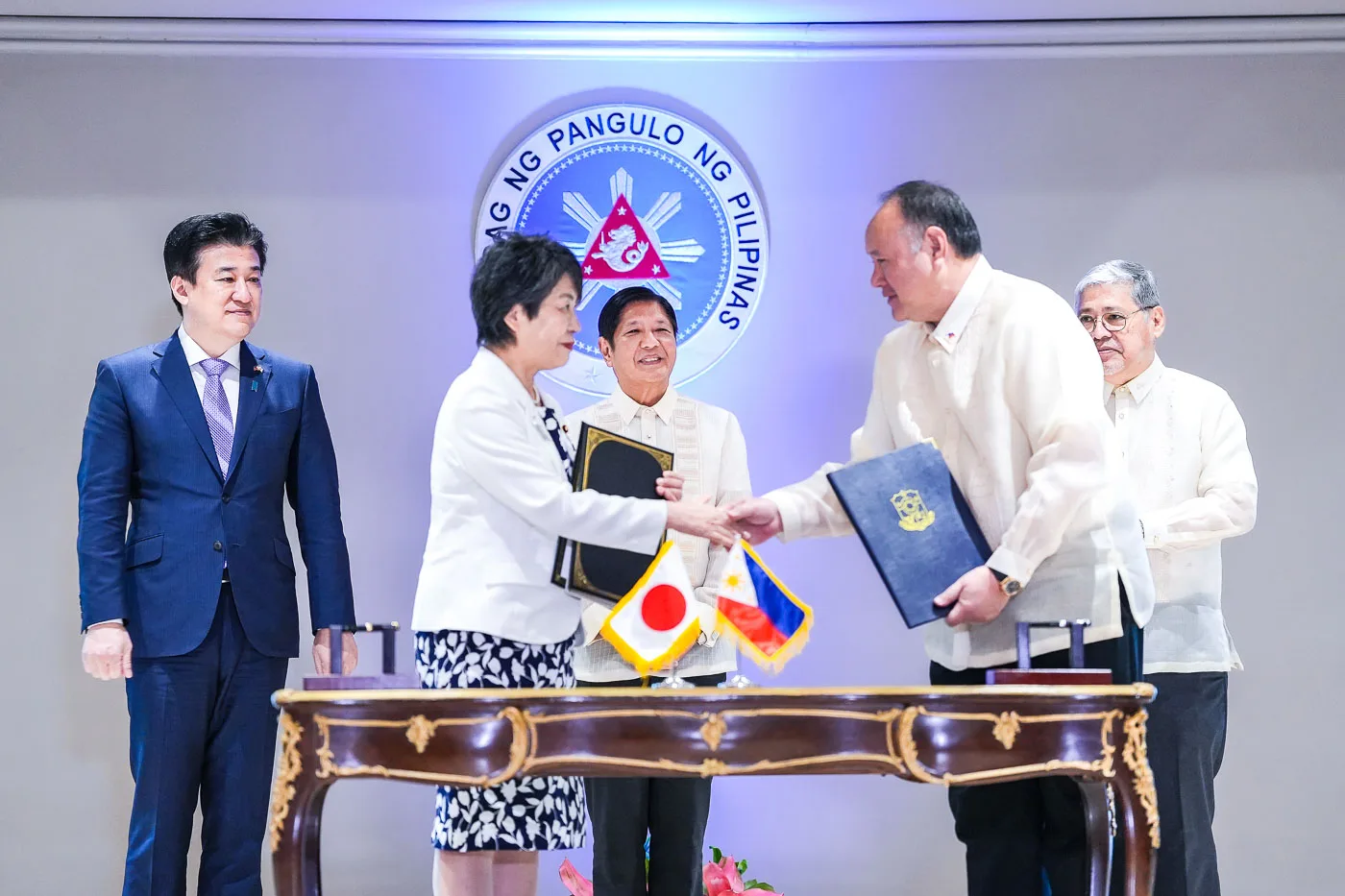
1) What is the RAA?
The RAA was forged to allow Japanese forces and its entire military to freely enter and leave any part of the Philippine’s land, air and sea. Negotiations for this were conducted secretly. This form part of the plan of the US and its allies to deploy more and more troops in Asian countries, station their vessels, conduct exercises and prepare for war, and bind the Philippines more tightly to US-led military alliances.
At the behest of the US, the agreement was finalized in just a few months. The agreement was first discussed during the US-Aquino II regime (2010-2016). But it was interrupted during the Duterte regime, which pretended to be anti-US in order to profit from billion-dollar contracts with China. The RAA is one of five other military agreements the Philippines entered into this year. (See table.)
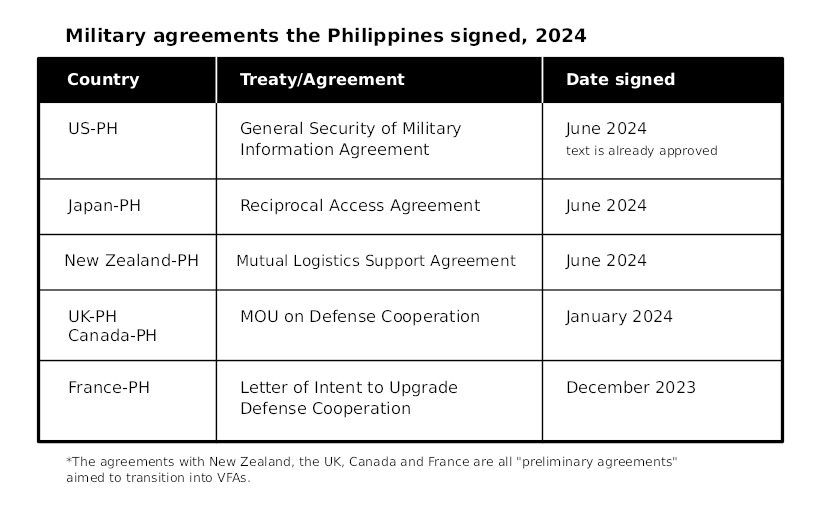
For Japan, the RAA is the first such agreement signed with an Asian country. It also has an RAA with Ausralia (2022) and the UK (2023).
2) How will it affect the sovereignty and security of the country?
The RAA is not too different from the Visiting Forces Agreements signed by the Philippines with the US in terms of violating sovereignty and exposing the Philippines to external security threats.
Like the VFA, visiting Japanese troopers and civilian contractors, as well as their families, need neither visas nor register as “foreign visitors” with Philippine state agencies. Their soldiers need not even present a passport if they have a Japanese-signed “defense service identity card” with them.
The agreement does not explicitly state how long Japanese troopers can stay in the country. While inside the country, the Philippines excercises no authority over them and Japan will manage and have control over all their activities.
Japan can “introduce, store and use” all types of its weapons, ammunition, explosives and hazardous equipment within the Philippines. Although the agreement makes claims of “preserving” civilian communities and the environment, it stipulates that neither side is responsible for any “damage to any property, death of a troop or civilian” as long as they occurred while performing official duties” (Article XXIII, Number 1, Letter A). Thus, Japan is not responsible for any damage committed by its troopers, equipment and weapons as long as the damage is covered by “joint” activities. In the agreement, Japan can use all public services, utilities and facilities in any unilateral or joint activity (Article IX).
Although the language of the treaty is direct regarding the “authority to have criminal jurisdiction over” any offender, (Article XXI, Count 2, Letter B), Japan still retains the “right to exercise exclusive jurisdiction” over its troopers if the crimes are “not covered” by Philippine law or if the crime is only against the property or security of Japan (Article XXI, Number 4, Letter A). Likewise, the Philippines may “decide” not to exercise its jurisdiction over any Japanese trooper who has been charged with criminal offenses, or may give “sympathetic consideration” to Japan’s request to waive its jurisdiction in such cases (Article XXI, Number 4, Letters C and D).
Such provisions are similar to the provisions of the US-RP Visiting Forces Agreement that were used to release some American troopers who committed crimes in the Philippines, such as US Marine Lance Cpl. Joseph Scott Pemberton who killed transgender Jennifer Laude in 2014 and Marine Lance Cpl. Daniel Smith who raped “Nicole” in the Philippines in 2006. Like the VFA and other military agreements between the Philippines and the US, the RAA will drag the country into Japan’s conflicts due to the presence of its troops and military equipment in the country.
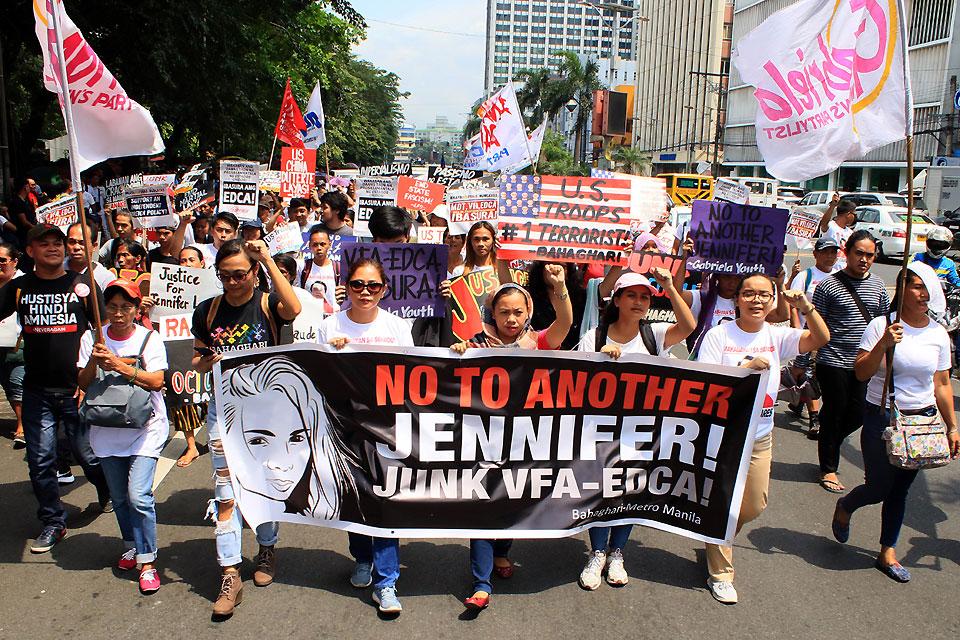
3) Why did the US push the RAA?
The RAA is part of the Indo-Pacific Strategy of the US that primarily aims to contain the expansion of the power and influence of China, their common rival, in Asia. It was signed in the context of Japan’s intensified overseas military operations in the framework of the US-led Quad (Quadrilateral Security Dialogue), and its growing role in exercises and war preparations.
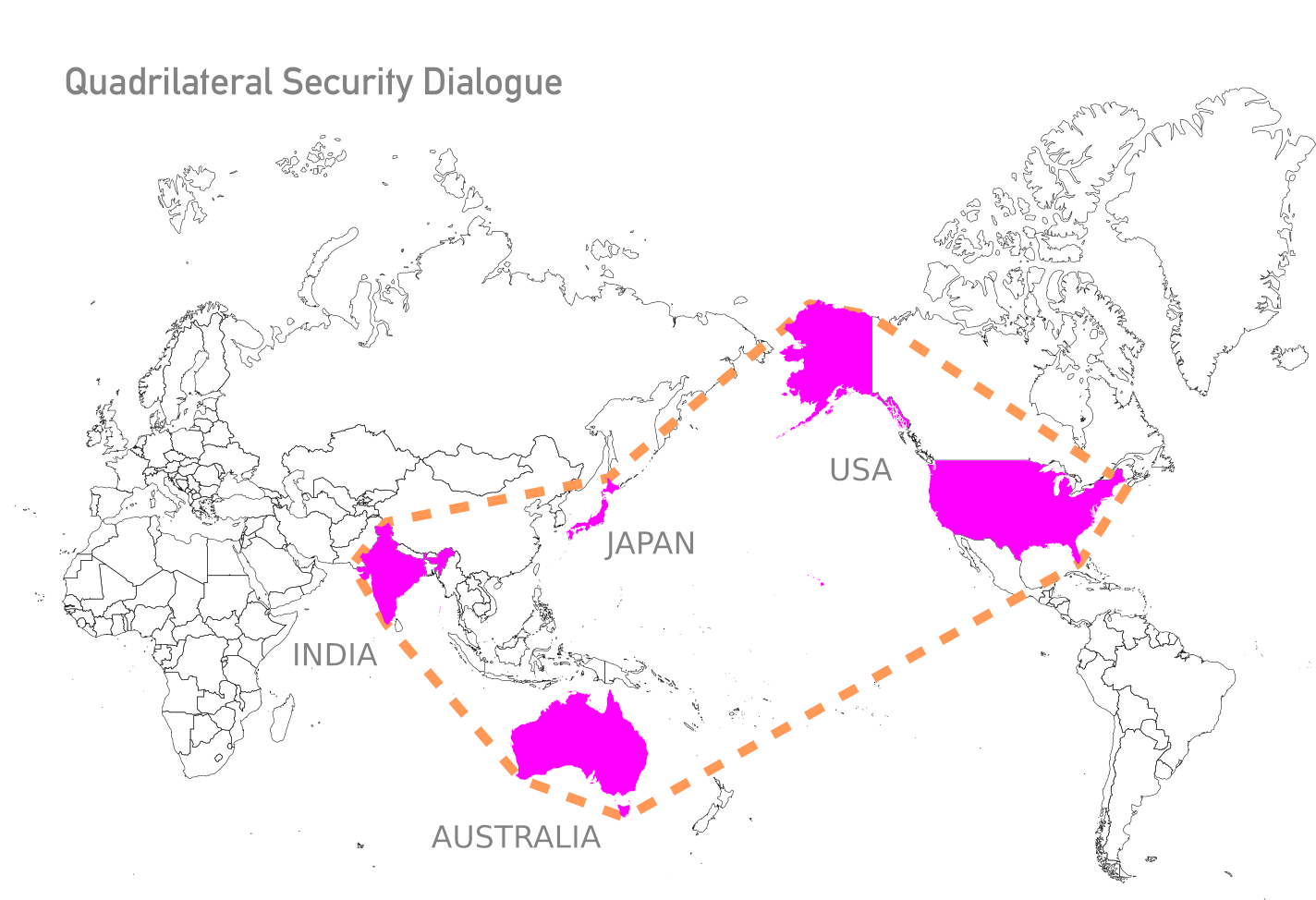
On US instigation in recent years, Japan has strengthened and expanded its so-called self-defense force as a belligerent force, which its own constitution expressly prohibits. The US is driving Japan to increase its military budget to 2% (from 1%) of its gross domestic product to “share the cost” of “deterring Chinese aggression.”
The US uses Japan as a principal instrument for imposing imperialist hegemony in Asia. It is home to at least 15 large military bases with 55,000 American troopers. The 7th Fleet, the US Navy’s largest forward-deployed fleet, is stationed in Japan. It currently consists of three aircraft carriers (from one), 4-5 cruisers, 18-19 destroyers, 8 amphibious ships, 5 submarines, 9-11 logistics ships and over 500 different types of aircraft.
For the first time in 2022, the US invited Japan to a North Atlantic Treaty Organization meeting, where it formed several bilateral agreements of arms sales and joint exercises. This 2024, the US convened two separate “trilateral meetings” to give Japan a greater role in its intervention in South Korea and the Philippines.
4) What would Japan gain from the RAA?
While Japan serves as the junior partner of US imperialist power, the US also runs the calculated risk of emboldening the expansionist dreams of Japanese monopoly capitalists.
In 2022, Japan developed the National Security Plan which included the Official Security Assistance (OSA) program. Like its Official Development Assistance (ODA), OSA channels Japan’s surplus capital and military equipment to other countries in Asia. OSA are loans to enable a borrowing country to purchase machinery, vehicles, various Japanese products and services. In the following year, Japan outlined its own Free and Open Indo-Pacific plan to shape the strengthening of its own military presence and expansion of influence in Asia as an imperialist country.
Under the OSA program, Japan targets to use the Philippines, Vietnam and Singapore as dumping grounds for capital and military equipment. One of its first contracts was a loan to the Philippines to buy five of its patrol ships which the Philippine Coast Guard will use to “patrol” the ocean with American, Japanese and Australian forces.
Besides the OSA, Japan plans to dump up to $75 billion of its surplus capital in the form of investment in various infrastructure projects in South and Southeast Asian countries. More than the US and China, Japan is the largest imperialist investor in South and Southeast Asia. Its current investment in projects in Southeast Asia alone amounts to $367 billion.
Japan is the Philippines’ number one trading partner in 2023 and the country’s largest source of foreign investment in recent years. Japan safeguards its commercial interests in the country through the signing of the Japan-Philippines Economic Partnership Agreement (JPEPA). This agreement unleashed Japan’s exploitation of Filipino resources and cheap labor, while obliging the Philippines to lower tariffs on Japanese products and remove remaining protections on local industry and agriculture.
Japan invested its capital (in the form of loans) in grand infrastructure projects, mainly railways and roads, which displaced marginalized communities, damaged the livelihoods of thousands of indigent people and destroyed the environment. It is also responsible for the worsening of the transportation system with its push for bogus modernization that has displaced traditional jeeps from the road. It is involved in plunderous projects for renewable energy, while being the number one investor in coal and LNG plants that are environmentally destructive and responsible for worsening climate change.
5) Why does signing the RAA make Marcos a traitor to the Philippines?
For the first time since the end of the Second World War, the RAA will allow Japanese imperialist troopers to enter and stay in the country. Between 1942 and 1945, when Japan brutally occupied the Philippines, its troopers carried out mass murder, torture and sexual violence. Historians estimate that Japanese troopers killed between 90,000-300,000 Filipino civilians during this period. One of the most brutal events was the Battle of Manila from February to March 1945, where Japanese troopers killed hundreds of thousands and raped hundreds.
Among the wounds left unhealed from the brutal occupation is the injustice to victims of sexual slavery by Japanese forces. Thousands of Filipino women, children and gays were abducted from their communities and imprisoned in military camps to be repeatedly raped, tortured, and humiliated. The victims were identified as “comfort women.” Despite the United Nations’ push, Japan has never fully recognized the Filipino comfort women and has failed to give them a single cent of compensation.
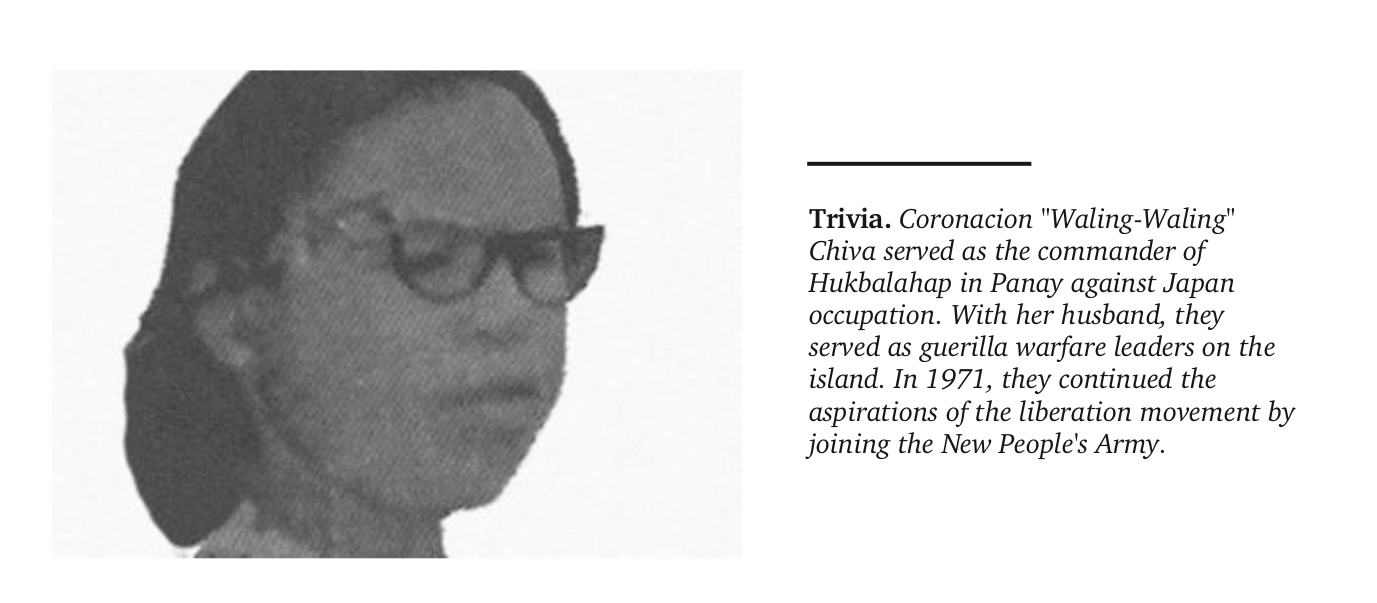
Amid intensifying US and Japanese interference in the Philippines, and dragging others in its imperialist war provocations against China, the Filipino people strongly oppose the unequal RAA. They condemn the Marcos regime and its allies in the Senate for betraying the Filipino people.
In the week following the signing of the agreement, national-democratic groups immediately expressed opposition to it. They went to the Japanese embassy to express their grievances. Lila Pilipina, an organization of comfort women that was formed in 1994, was among those who expressed strong opposition. Only a few of them remain today.
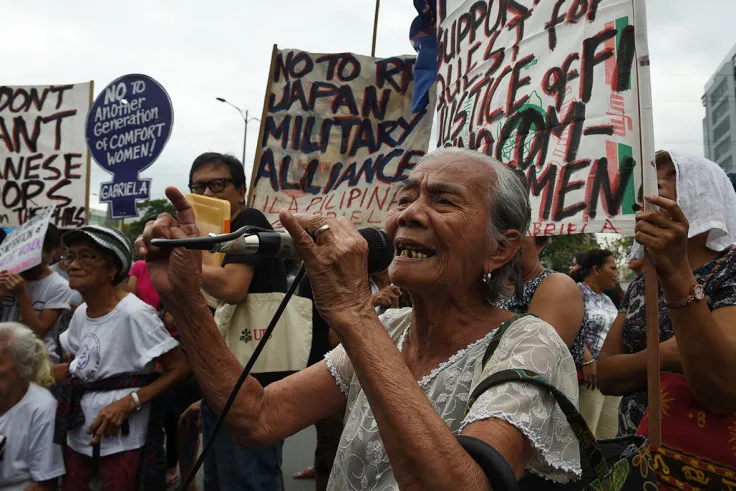
Progressive groups and congressmen have long pushed for the inclusion of stories of comfort women in education so that the brutality of the Japanese occupation is not forgotten. Until now, the reactionary state has not addressed it, and instead is forcing it into oblivion.
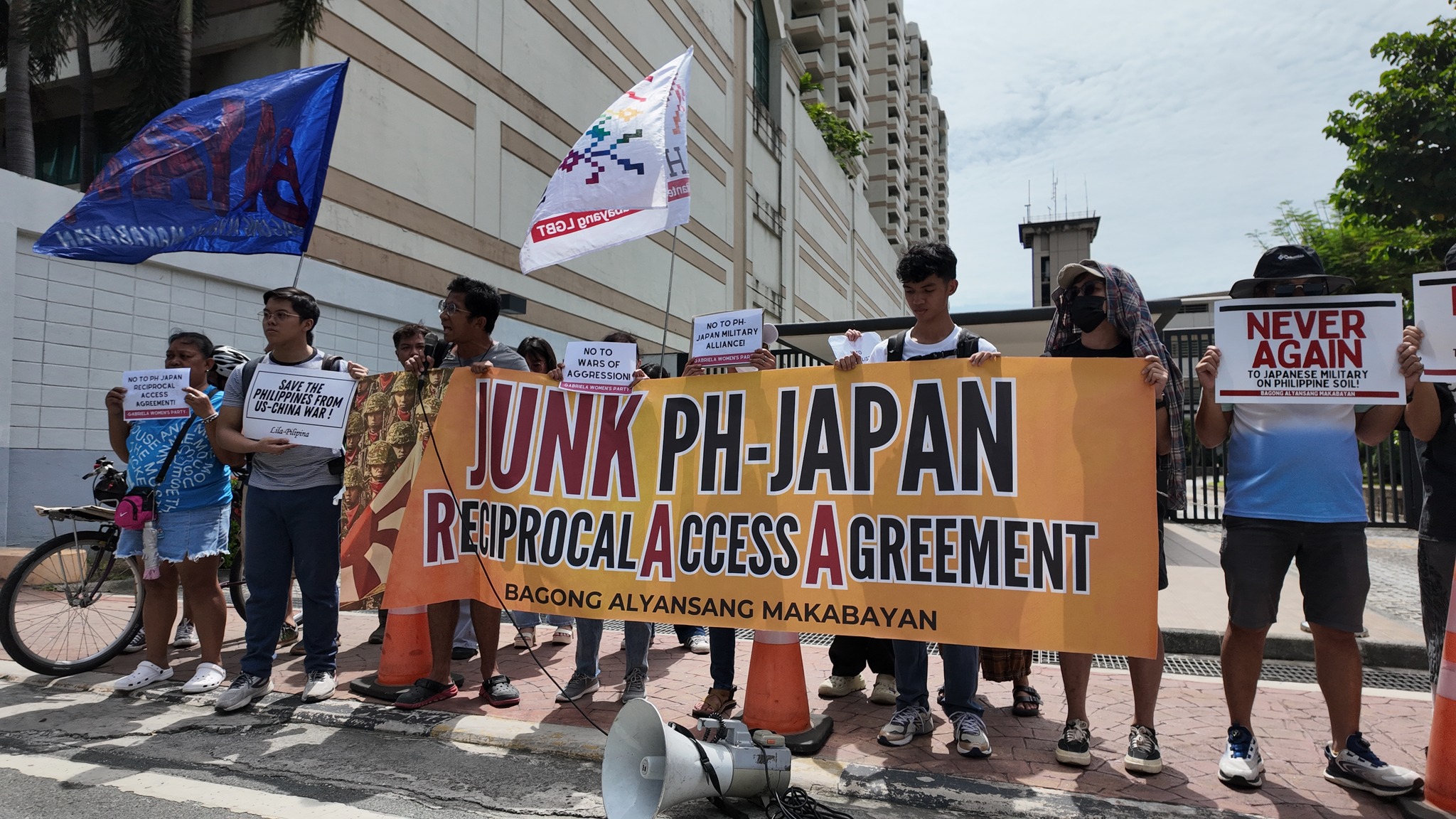
Oppose the Philippine-Japan Reciprocal Access Agreement!
Fight US war provocations!
____
Prepared by:
Information Bureau
Communist Party of the Philippines
September 2024

